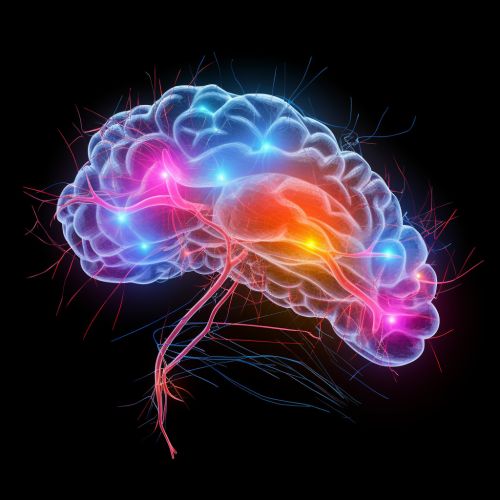Field Dependence-Independence Theory
Overview
Field Dependence-Independence (FDI) theory is a cognitive style theory that describes the different ways individuals perceive and interact with the world around them. This theory, first proposed by Herman Witkin and his colleagues in the 1950s, suggests that individuals fall on a continuum from field-dependent to field-independent cognitive styles.
Field-dependent individuals are more likely to rely on external cues for processing information and making decisions, while field-independent individuals are more likely to rely on internal cues and structures. This difference in cognitive style has implications for how individuals learn, solve problems, and interact socially.


Historical Background
The concept of field dependence-independence originated from the work of the Gestalt psychologists, who were interested in how individuals perceive and interpret patterns and structures. Herman Witkin, a psychologist and researcher, expanded on these ideas and developed the FDI theory to explain individual differences in cognitive processing.
Witkin's research was influenced by the work of Kurt Koffka, Wolfgang Köhler, and Max Wertheimer, who proposed that perception is not just a passive reception of information, but an active process of organizing and interpreting sensory information. Witkin's FDI theory built on this idea, suggesting that individuals vary in their ability to structure and organize information, and that this variation is reflected in their cognitive style.
Conceptual Framework
The FDI theory posits that individuals differ in their reliance on the external field (the environment or context) versus internal cues (one's own perceptions, thoughts, and feelings) when processing information. This difference is thought to reflect a fundamental aspect of cognitive style.
Field-dependent individuals tend to perceive the world in a holistic way, focusing on the overall context and relationships among elements. They are more influenced by the external field and have difficulty separating details from the surrounding context. This cognitive style is associated with a greater sensitivity to social cues and a preference for social and cooperative learning situations.
On the other hand, field-independent individuals are more analytical and have a greater ability to distinguish details from the surrounding context. They rely more on their own internal cues and structures, and are less influenced by the external field. This cognitive style is associated with a preference for individual and competitive learning situations, and a greater ability to solve problems independently.


Measurement and Assessment
The most common method for assessing field dependence-independence is the Rod and Frame Test (RFT) and the Embedded Figures Test (EFT), both developed by Witkin. In the RFT, individuals are asked to adjust a rod within a tilted frame to the upright position, relying only on their internal sense of verticality. Field-dependent individuals are more likely to be influenced by the tilted frame and adjust the rod in line with it, while field-independent individuals are more likely to ignore the frame and adjust the rod to the true vertical.
The EFT requires individuals to find a simple shape hidden within a more complex figure. Field-dependent individuals typically take longer to find the hidden shape, as they are more influenced by the overall figure and have difficulty separating the shape from the context. Field-independent individuals, on the other hand, are more able to ignore the context and focus on the shape.
These tests have been used in a wide range of research studies to investigate the implications of field dependence-independence for learning, problem solving, social interactions, and other areas.
Implications and Applications
The FDI theory has been applied in various fields, including education, psychology, and human-computer interaction. In education, understanding a student's cognitive style can help educators tailor instruction to meet individual needs. For example, field-dependent students may benefit from more structured learning environments and cooperative learning activities, while field-independent students may prefer more self-directed learning opportunities.
In psychology, the FDI theory has been used to explore individual differences in social cognition, decision making, and personality. For example, research has found that field-dependent individuals are more likely to conform to social norms and are more sensitive to social approval, while field-independent individuals are more likely to be autonomous and self-reliant.
In the field of human-computer interaction, understanding a user's cognitive style can inform the design of user interfaces and systems. For example, field-dependent users may prefer interfaces that provide clear context and guidance, while field-independent users may prefer more flexible and customizable interfaces.


Criticisms and Controversies
While the FDI theory has been influential in various fields, it has also been subject to criticism. Some researchers have questioned the validity and reliability of the RFT and EFT as measures of field dependence-independence. Others have argued that the theory oversimplifies cognitive processing and fails to account for the complexity and variability of human cognition.
Moreover, some critics have pointed out that the theory is based on a dichotomous view of cognitive style, which may not accurately reflect the full range of individual differences. They argue that cognitive style is likely to be multidimensional and context-dependent, rather than a fixed trait.
Despite these criticisms, the FDI theory continues to be used and explored in various fields, and has contributed to our understanding of individual differences in cognitive processing.
See Also
Cognitive Styles Gestalt Psychology Human-Computer Interaction Educational Psychology Social Cognition
References
1. Witkin, H. A., Moore, C. A., Goodenough, D. R., & Cox, P. W. (1977). Field-dependent and field-independent cognitive styles and their educational implications. Review of Educational Research, 47(1), 1-64. 2. Kozhevnikov, M. (2007). Cognitive styles in the context of modern psychology: Toward an integrated framework of cognitive style. Psychological Bulletin, 133(3), 464-481. 3. Riding, R., & Rayner, S. (1998). Cognitive styles and learning strategies: Understanding style differences in learning and behavior. London: David Fulton. 4. Zhang, L. F. (2004). Revisiting the predictive power of thinking styles for academic performance. The Journal of Psychology, 138(4), 351-370.
